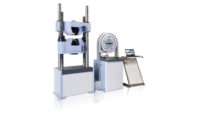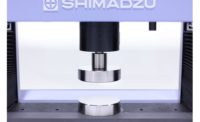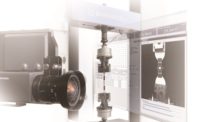The pervasiveness of rubber and plastic products is hard to overstate. They are everywhere, and they have been around for a while. In the case of rubber, it’s been in use since the early 1800s. While rubber and elastomers (from “elastic polymers”) previously had slightly different meanings, today for all practical purposes they are synonymous. Common elastomers include silicone rubber and fluoroelastomers. Elastomer additives are used to create different and more desirable formulations.
What are these materials used for? The applications are diverse, ranging from aerospace to automotive to biomedical, and chances are you probably used a product with one of these materials today, from the grip of a thermoplastic elastomer on your toothbrush to any number of components in a car. Elastomers may be used in the automotive industry for tire manufacturing, in the oil and gas industry for sealing, and even in wetsuits or cycling shorts.
In order to ensure the successful testing of these materials, as with so many industries and applications, standards are in place. In this case, ASTM D412 and ISO 37.
Interest in these materials goes way back. The ASTM Committee D11 on Rubber was established in 1912. Today the group has more than 350 members, with 228 standards, and participation from 25 countries, according to ASTM. The standards are available in Volumes 09.01 & 09.02 in the Annual Book of ASTM Standards. The group meets twice each year, in June and December, and for those who are interested, the next meeting of the D11 Rubber committee of ASTM will be held June 3-5, 2019, in Denver, CO, at the Sheraton Denver Downtown Hotel.
Get to Know the Standard
For those who aren’t familiar, ASTM D412-16 is the official Standard Test Methods for Vulcanized Rubber and Thermoplastic Elastomers—Tension from ASTM International. In other words, the official standard for tensile testing of elastomers.
As stated on the ASTM website, “These test methods cover procedures used to evaluate the tensile (tension) properties of vulcanized thermoset rubbers and thermoplastic elastomers. These methods are not applicable to ebonite and similar hard, low elongation materials.” The two methods are A: Dumbbell and Straight Section Specimens and B: Cut Ring Specimens.
Why are these test methods so important? ASTM explains that the test methods are designed to undergo stress of various use cases. According to the organization, “All materials and products covered by these test methods must withstand tensile forces for adequate performance in certain applications. These test methods allow for the measurement of such tensile properties. However, tensile properties alone may not directly relate to the total end use performance of the product because of the wide range of potential performance requirements in actual use.”
Success in a given application depends on the interaction of various components and a range of factors. Indeed, the variety of applications means that a single test cannot ensure that the material is the best fit for a potential product. Rather, these test methods look at very specific qualities for the materials. From there, it’s up to the product designer to see if the material can meet specifications. In many cases, the particular formulations of the materials mean that the tensile properties results may vary. As opposed to the relatively straightforward results for metals, it is often more difficult to predict the behavior of these materials because of the complex formulations behind them.
How to Test
The importance of these tests is related to material characterization, examination of function, and quality control. The testing process examines several factors related to material performance, including residual elongation of a sample after being stretched and allowed to relax as specified. The amount of time for stretching and recovery are specified by the ASTM D412. In addition, specimen preparation, test equipment, and conditions are all outlined in the standard.
As for the ISO 37 standard, according to ISO, “This document specifies a method for the determination of the tensile stress-strain properties of vulcanized and thermoplastic rubbers. The properties which can be determined are tensile strength, elongation at break, stress at a given elongation, elongation at a given stress, stress at yield and elongation at yield.”
While the test methods are critical, so are the machines. Evaluating the additives that are used in polymer materials requires the right tools for the application. A universal testing machine is the instrument of choice for the ASTM D412 standard, and accessories may be added as needed. Extensometers may be also used to improve measurement results.
Reporting calculations in compliance with the standard is one challenge of testing to the ASTM standard. This can often be addressed with the appropriate software. Other important considerations to keep in mind during testing are specimen alignment and a secure grip.
Application engineers can turn to testing companies for more detailed analysis of their needs, and to determine the right testing solution for their budget.
While the machines and materials have changed significantly over the past 100 years, standards have been around all the while to make sure test methods are in place to ensure the best results.






